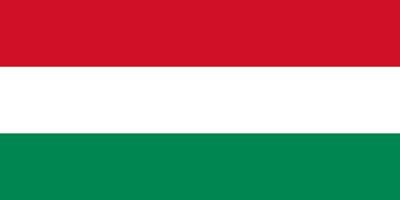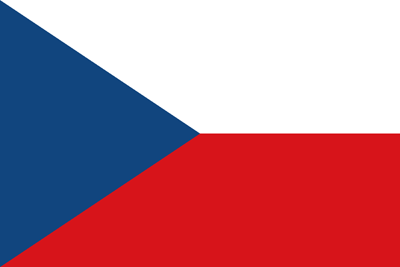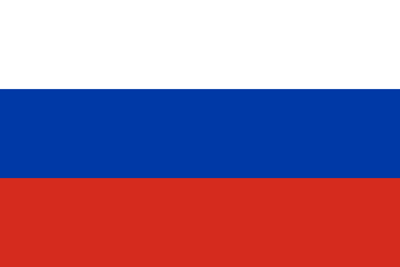Commercieel ijzerpoeder heeft zich bewezen als een veelbelovende stof voor de sanering van milieuproblemen, met name in de verwijdering van zware metalen en andere schadelijke verontreinigingen uit water en bodem. Door zijn reductieve eigenschappen en veelzijdigheid kan het ijzerpoeder effectief omgaan met een breed scala aan verontreinigende stoffen, waaronder uranium, chroom en arseen. Dit heeft de afgelopen jaren geleid tot intensief onderzoek naar de verbetering van de efficiëntie en veiligheid van commercieel ijzerpoeder in milieutoepassingen, en heeft bovendien bijgedragen aan de theoretische basis voor bredere toepassingen in milieubeheer.
Een van de belangrijkste voordelen van commercieel ijzerpoeder is de reactie van ijzer in zijn nulwaardige toestand (Fe°) met verschillende verontreinigingen, wat leidt tot de vorming van onschadelijke producten. Dit proces is vooral nuttig in de behandeling van waterverontreiniging, waarbij het ijzerpoeder bijvoorbeeld uranium (U) uit afvalwater kan reduceren tot zijn minder gevaarlijke vormen. De effectiviteit van dit proces wordt versterkt door de inzet van nanotechnologie, zoals nanoschaal nulwaardig ijzer (nZVI), dat door zijn grotere specifieke oppervlakte sneller reageert met verontreinigende stoffen. Onderzoek heeft aangetoond dat dit type ijzer bijzonder goed werkt in de verwijdering van uranium uit water, wat bijdraagt aan de ontwikkeling van nieuwe methoden voor uraniumextractie.
Naast de verbetering van de efficiëntie van ijzerpoeder, wordt ook veel aandacht besteed aan de veiligheid van het gebruik ervan in milieutoepassingen. De uitdaging is om de potentiële schadelijkheid van ijzer, met name wanneer het in contact komt met andere stoffen, te minimaliseren. Er worden voortdurend nieuwe technieken ontwikkeld om ijzerpoeder te stabiliseren en te verbeteren, zoals de inkapseling van ijzerpoeder in grafeenoxide of de modificatie van het oppervlak met stoffen die de corrosie van ijzerpoeder verminderen en de effectiviteit van de sanering verbeteren.
De ontwikkeling van commercieel ijzerpoeder voor milieutoepassingen heeft niet alleen invloed op de sanering van water, maar biedt ook perspectieven voor andere vormen van milieubeheer. Zo kan ijzerpoeder helpen bij de stabilisatie van verontreinigde bodems door bijvoorbeeld arsenicum of andere zware metalen te binden. Dit soort innovatieve toepassingen maakt het mogelijk om op efficiënte en kosteneffectieve wijze de ecologische schade van verontreiniging te verminderen.
De toepassing van commercieel ijzerpoeder heeft echter ook zijn beperkingen. Er is bijvoorbeeld nog steeds behoefte aan verdere optimalisatie van de reactiesnelheid en selectiviteit van ijzerpoeder in complexe milieus, zoals in aanwezigheid van hoge concentraties van concurrerende verontreinigende stoffen. Daarnaast moeten de bijproducten van de sanering zorgvuldig worden beheerd om secundaire vervuiling te voorkomen. Verder onderzoek richt zich dan ook niet alleen op de verbetering van de technologieën die het gebruik van ijzerpoeder in milieutoepassingen mogelijk maken, maar ook op de ontwikkeling van methoden om de afvalstromen die tijdens het proces ontstaan, effectief te verwerken.
In dit kader moet ook de interactie van ijzerpoeder met andere stoffen zoals sulfiden en grafeneoxiden worden bestudeerd, omdat deze materialen de eigenschappen van het ijzerpoeder aanzienlijk kunnen verbeteren. De combinatie van nanotechnologie en innovatieve materialen maakt het mogelijk om de efficiëntie van ijzerpoeder in milieutoepassingen verder te vergroten, bijvoorbeeld door de stabilisatie van ijzerpoeder of de verbetering van de bindingseigenschappen van ijzer met verontreinigende stoffen.
Wat betreft de uraniumextractie, het gebruik van commercieel ijzerpoeder biedt aanzienlijke voordelen, met name in de verwijdering van uranium uit afvalwater, een proces dat steeds belangrijker wordt naarmate de vraag naar uranium stijgt voor nucleaire energieproductie. De recente ontwikkelingen op het gebied van fotokatalytische technologieën hebben de potentie om de efficiëntie van uraniumextractie verder te verbeteren, door gebruik te maken van gecombineerde technologieën zoals carbon-semigeleider hybride materialen.
Duidelijk is dat de integratie van commercieel ijzerpoeder in milieusanering zowel uitdagingen als mogelijkheden biedt. Het onderzoek naar de effecten van verschillende modificaties van ijzerpoeder en de toepassingen in de verontreiniging van water en bodem vormt de sleutel tot het ontwikkelen van efficiënte, veilige en duurzame methoden voor de behandeling van zware metalen en andere verontreinigende stoffen in de toekomst. De toekomst van milieusanering zal waarschijnlijk steeds meer afhangen van dergelijke innovatieve benaderingen die zowel chemische processen als nieuwe materialen combineren, waarbij commercieel ijzerpoeder een belangrijke rol zal blijven spelen.
Hoe speelt oppervlakoxidatie een rol in de fotokatalytische reductie van U(VI) door WS2-O7.7 nanosheets?
In recent years, the photocatalytic reduction of uranium ions (U(VI)) has gained attention due to its potential in environmental remediation, especially in radioactive contamination scenarios. WS2-O7.7 nanosheets have emerged as promising photocatalysts for the efficient reduction of U(VI), showing strong reusability and resistance to interference from other ions. This makes them a viable candidate for practical applications in water treatment and other industrial processes.
The performance of WS2-O7.7 in the removal of U(VI) was tested under various conditions. One of the key findings was that even after five cycles, these nanosheets maintained a removal efficiency of over 84.5% for U(VI), demonstrating their high reusability. This is particularly important for applications requiring prolonged use, where material degradation can often reduce efficiency. Additionally, the photocatalytic efficiency of WS2-O7.7 nanosheets remained unaffected by the presence of most competing ions, which is a crucial factor when dealing with industrial wastewater, where a variety of ions may be present simultaneously. The only exceptions were copper (Cu2+) and iron (Fe3+), which did show some negative impact on the photocatalytic process.
The pH of the solution also plays a significant role in the photocatalytic reduction of U(VI). The study revealed that at a pH of 4.6 or higher, the removal efficiency remained above 96%. This finding suggests that WS2-O7.7 nanosheets perform optimally in slightly acidic to neutral environments, a common characteristic of many natural and industrial water sources. The influence of pH on photocatalytic reactions must therefore be considered when designing and implementing water treatment technologies.
In addition to the above-mentioned factors, the surface oxidation of WS2 nanosheets significantly impacts their photocatalytic performance. The oxidation of WS2 leads to the formation of hydroxyl groups (-OH), which act as binding sites for uranium ions (UO2+ 2). This binding facilitates the photocatalytic reduction of U(VI) to U(V) and U(IV), further improving the efficiency of the process. The role of hydrogen atoms in this mechanism is critical. In situ surface oxidation captures hydrogen atoms, which, through their interaction with the surface, help form the necessary -OH groups for uranium binding. This mechanism is essential for the successful photocatalytic reduction of U(VI) and can be described as follows: after the photocatalyst is activated under simulated sunlight, electrons reduce U(VI) to U(IV) through the formation of intermediate compounds such as UO2-H-WS2-O7.7.
Moreover, the reaction kinetics were studied using D2O as a solvent in kinetic isotope effect (KIE) experiments, where the reaction rate for WS2-O7.7 was found to be significantly higher compared to pure WS2. This suggests that hydrogen atoms play an important role in the reaction's rate, making them indispensable for the efficiency of the photocatalytic process.
These findings also suggest that surface oxidation not only enhances the photocatalytic reduction of U(VI) but also provides insights into the material's capability to bind and reduce other toxic or radioactive substances in water. The analysis of binding energies further emphasized that WS2-O7.7 nanosheets have a strong affinity for uranium, particularly when hydroxyl groups are present, which improve the adsorption of UO2+ 2.
In practical terms, this knowledge is important for the design of future photocatalytic materials. It highlights the necessity of controlling the oxidation state of the material's surface to optimize its performance. Additionally, understanding how hydrogen influences the binding and reduction of uranium offers a pathway for designing photocatalysts with even greater efficiency. Further studies could focus on optimizing the synthesis of WS2-O7.7 nanosheets to enhance their stability, lifespan, and resistance to interference from various ions.
In conclusion, the interaction between surface oxidation, hydrogen incorporation, and photocatalytic reduction is key to understanding the potential of WS2-O7.7 nanosheets for uranium removal. While much has been learned, future research can expand on these findings to refine and apply these materials in real-world environmental applications.

 Deutsch
Deutsch
 Francais
Francais
 Nederlands
Nederlands
 Svenska
Svenska
 Norsk
Norsk
 Dansk
Dansk
 Suomi
Suomi
 Espanol
Espanol
 Italiano
Italiano
 Portugues
Portugues
 Magyar
Magyar
 Polski
Polski
 Cestina
Cestina
 Русский
Русский